If you’ve noticed a musty smell coming from under your kitchen sink cabinet or have seen dark, fuzzy spots growing on the walls or floor, chances are you have a mold problem. Mold is a common household issue, especially in areas with high levels of moisture, and can cause serious health problems if left untreated. If you have mold under your kitchen sink cabinet, here’s how you can safely and effectively remove it.How to Remove Mold from Under a Kitchen Sink Cabinet
Before you begin the mold removal process, it’s important to protect yourself by wearing gloves, a face mask, and safety goggles. You should also open a window or door to allow for ventilation. Step 1: Identify the Source of the Mold The first step in removing mold is to identify where it’s coming from. Check for any leaks or standing water under your kitchen sink cabinet, as these can be breeding grounds for mold. If you find a leak, fix it immediately to prevent further mold growth. Step 2: Prepare the Area Remove all items from under your kitchen sink cabinet and place them in a well-ventilated area. Use plastic sheeting or old towels to cover any nearby surfaces to prevent contamination. Step 3: Clean the Moldy Area Using a mixture of bleach and water, scrub the moldy area with a scrub brush or sponge. Make sure to wear gloves and protective clothing while cleaning. Allow the mixture to sit for 10-15 minutes before rinsing with clean water. Step 4: Dry the Area After cleaning, use a fan or dehumidifier to dry the area completely. This will prevent any remaining mold spores from growing. Step 5: Dispose of Materials Place any materials used to clean the mold, such as rags or sponges, in a plastic bag and tie it tightly. Dispose of the bag in an outdoor trash bin to prevent the spread of mold.Mold Removal Under Kitchen Sink Cabinet: A Step-by-Step Guide
If you’re hesitant to use bleach, there are other natural alternatives for removing mold. Here are some effective ways to get rid of mold under your kitchen sink cabinet: Vinegar: Mix equal parts of vinegar and water and spray it onto the moldy area. Let it sit for an hour before wiping it clean with a damp cloth. Baking Soda: Make a paste using baking soda and water and apply it to the moldy area. Let it sit for 10-15 minutes before scrubbing it off with a brush or sponge. Grapefruit Seed Extract: Mix 20 drops of grapefruit seed extract with two cups of water and spray it onto the moldy area. Let it sit for 10 minutes before wiping it off with a damp cloth.Effective Ways to Get Rid of Mold Under Kitchen Sink Cabinet
If you prefer to use natural ingredients, here’s a DIY mold removal solution that is both effective and safe: Ingredients: - 1 cup of water - 1 cup of white vinegar - 10 drops of tea tree oil - 10 drops of lavender essential oil Instructions: 1. Mix all the ingredients in a spray bottle. 2. Spray the mixture onto the moldy area and let it sit for 10-15 minutes. 3. Scrub the area with a brush or sponge. 4. Rinse the area with clean water and dry thoroughly. This DIY solution not only removes mold, but it also prevents it from coming back. Tea tree oil and lavender essential oil have anti-fungal properties that can help prevent future mold growth.DIY Mold Removal for Under Kitchen Sink Cabinet
Once you have successfully removed mold from under your kitchen sink cabinet, it’s important to take measures to prevent it from coming back. Here are some tips for preventing mold growth: Fix Leaks: Check for any leaks under your kitchen sink cabinet and fix them immediately. This will prevent moisture from building up and creating an ideal environment for mold growth. Use a Dehumidifier: If your kitchen has high levels of humidity, consider using a dehumidifier to keep the air dry. Keep the Area Clean and Dry: Regularly clean and dry the area under your kitchen sink cabinet to prevent mold from forming.Preventing Mold Growth Under Kitchen Sink Cabinet
If you prefer to use commercial products for mold removal, here are some of the best options on the market: Concrobium Mold Control: This non-toxic, eco-friendly product effectively removes mold and prevents it from coming back. Mold Armor Mold Remover and Disinfectant: This powerful spray kills mold and prevents its regrowth. Zep Mold Stain and Mildew Stain Remover: This product is specifically designed to remove tough mold stains.Best Products for Mold Removal Under Kitchen Sink Cabinet
If you have a severe mold problem or are unsure about how to safely remove it, it’s best to hire a professional mold removal service. They have the necessary equipment and expertise to effectively remove mold and prevent it from coming back.Professional Mold Removal Services for Under Kitchen Sink Cabinet
Aside from the obvious visual signs of mold, there are other signs that indicate you may have mold growing under your kitchen sink cabinet. These include a musty smell, increased allergies or respiratory issues, and discolored walls or flooring. If you notice any of these signs, it’s important to address them immediately to prevent further mold growth and potential health problems. Follow the steps mentioned above to safely remove mold from under your kitchen sink cabinet.Signs of Mold Under Kitchen Sink Cabinet and How to Address Them
The most common cause of mold under a kitchen sink cabinet is moisture. This can be due to a leaky pipe, high levels of humidity, or poor ventilation. Here’s how to fix these issues: Fix Leaks: As mentioned earlier, check for any leaks and fix them immediately. Reduce Humidity: Use a dehumidifier or exhaust fan to reduce humidity levels in your kitchen. Improve Ventilation: Open a window or door while cooking or running the dishwasher to allow for proper ventilation.Common Causes of Mold Under Kitchen Sink Cabinet and How to Fix Them
To keep your kitchen sink cabinet free from mold, here are some tips to follow: Regularly Check for Leaks: Make it a habit to regularly check for leaks under your kitchen sink cabinet. Clean and Dry the Area: Keep the area under your kitchen sink cabinet clean and dry to prevent mold growth. Use Natural Cleaning Solutions: Avoid using harsh chemicals that can cause damage to your health and the environment. Stick to natural cleaning solutions to remove and prevent mold. Inspect Your Kitchen Regularly: Take the time to inspect your kitchen for any signs of mold growth, and address them immediately.Tips for Maintaining a Mold-Free Under Kitchen Sink Cabinet
Signs of Mold Growth Under Your Kitchen Sink Cabinet

Understanding the Dangers of Mold
 Mold is a common household problem that can cause serious health issues if left untreated. Not only does it have a negative impact on the appearance of your home, but it can also lead to respiratory problems, allergies, and other health complications. The kitchen is a prime location for mold growth, as it provides the ideal environment for it to thrive – warm, moist, and dark. One area in particular that is prone to mold growth is under the kitchen sink cabinet. This is often a neglected and hard-to-reach area, making it the perfect breeding ground for mold. If you have noticed a musty smell or black spots under your kitchen sink, it is important to take immediate action to
remove the mold
and prevent it from spreading further.
Mold is a common household problem that can cause serious health issues if left untreated. Not only does it have a negative impact on the appearance of your home, but it can also lead to respiratory problems, allergies, and other health complications. The kitchen is a prime location for mold growth, as it provides the ideal environment for it to thrive – warm, moist, and dark. One area in particular that is prone to mold growth is under the kitchen sink cabinet. This is often a neglected and hard-to-reach area, making it the perfect breeding ground for mold. If you have noticed a musty smell or black spots under your kitchen sink, it is important to take immediate action to
remove the mold
and prevent it from spreading further.
Causes of Mold Growth Under the Kitchen Sink Cabinet
 There are several reasons why mold may be growing under your kitchen sink cabinet. The most common cause is
moisture
. Leaks from pipes, faucets, or the sink itself can create the perfect conditions for mold to thrive. Another potential cause is poor ventilation. If the area under your sink is not properly ventilated, it can trap moisture and allow mold to grow. Additionally, if there is clutter or debris under the sink, it can provide a food source for mold to feed on. It is important to regularly check for leaks and keep the area under your sink clean and clutter-free to prevent mold growth.
There are several reasons why mold may be growing under your kitchen sink cabinet. The most common cause is
moisture
. Leaks from pipes, faucets, or the sink itself can create the perfect conditions for mold to thrive. Another potential cause is poor ventilation. If the area under your sink is not properly ventilated, it can trap moisture and allow mold to grow. Additionally, if there is clutter or debris under the sink, it can provide a food source for mold to feed on. It is important to regularly check for leaks and keep the area under your sink clean and clutter-free to prevent mold growth.
Steps for Mold Removal Under the Kitchen Sink Cabinet
 Mold removal
can be a daunting task, but with the right tools and techniques, it can be done effectively. Begin by identifying the source of the moisture and fixing any leaks. Next, remove any items and clutter from under the sink. Wearing protective gear such as gloves, a mask, and goggles, use a mixture of water and detergent to scrub away visible mold. For more stubborn mold, a mixture of water and vinegar or hydrogen peroxide can be used. If the mold growth is extensive, it may be necessary to hire a professional mold removal service. Once the mold has been removed, it is important to thoroughly dry the area and improve ventilation to prevent future growth.
Mold removal
can be a daunting task, but with the right tools and techniques, it can be done effectively. Begin by identifying the source of the moisture and fixing any leaks. Next, remove any items and clutter from under the sink. Wearing protective gear such as gloves, a mask, and goggles, use a mixture of water and detergent to scrub away visible mold. For more stubborn mold, a mixture of water and vinegar or hydrogen peroxide can be used. If the mold growth is extensive, it may be necessary to hire a professional mold removal service. Once the mold has been removed, it is important to thoroughly dry the area and improve ventilation to prevent future growth.
Preventing Future Mold Growth
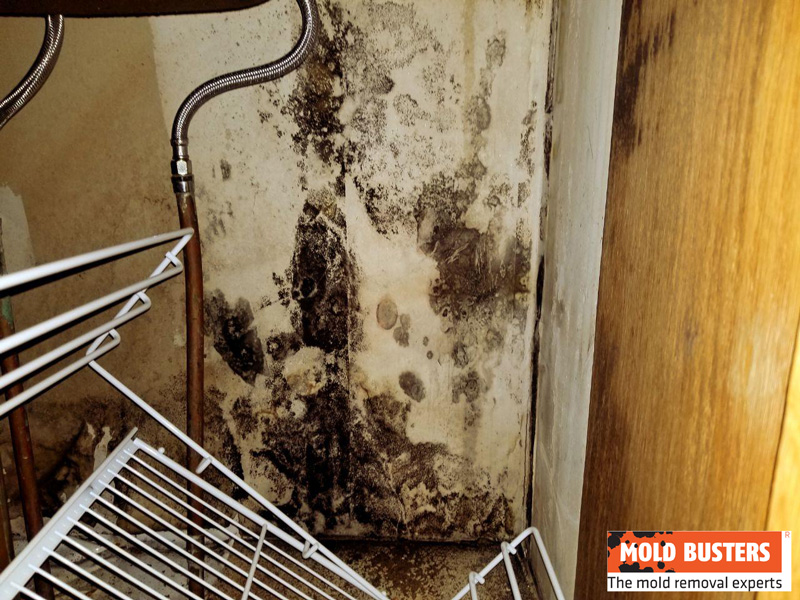 The key to preventing mold growth under your kitchen sink cabinet is to address any moisture issues and keep the area clean and well-ventilated. Regularly check for leaks and fix them promptly. Consider installing a dehumidifier or using moisture-absorbing products to reduce humidity. Keep the area under your sink clutter-free and regularly clean it with a mixture of water and detergent. Additionally, make sure to repair any damaged or cracked pipes to prevent future leaks.
In conclusion, mold growth under the kitchen sink cabinet is a common household problem that should not be ignored. By understanding the causes of mold growth and taking necessary steps for
removal and prevention
, you can ensure a healthy and mold-free home. Remember to regularly check for leaks, improve ventilation, and keep the area clean to keep mold at bay.
The key to preventing mold growth under your kitchen sink cabinet is to address any moisture issues and keep the area clean and well-ventilated. Regularly check for leaks and fix them promptly. Consider installing a dehumidifier or using moisture-absorbing products to reduce humidity. Keep the area under your sink clutter-free and regularly clean it with a mixture of water and detergent. Additionally, make sure to repair any damaged or cracked pipes to prevent future leaks.
In conclusion, mold growth under the kitchen sink cabinet is a common household problem that should not be ignored. By understanding the causes of mold growth and taking necessary steps for
removal and prevention
, you can ensure a healthy and mold-free home. Remember to regularly check for leaks, improve ventilation, and keep the area clean to keep mold at bay.













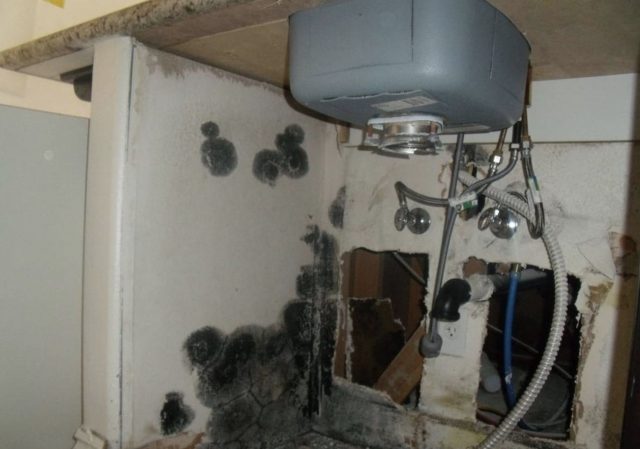
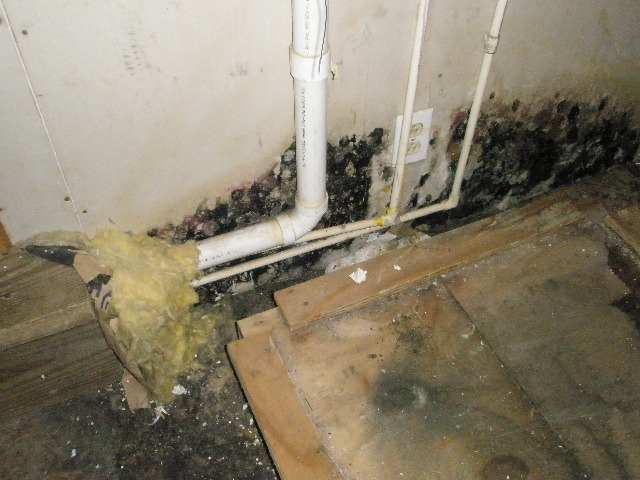


























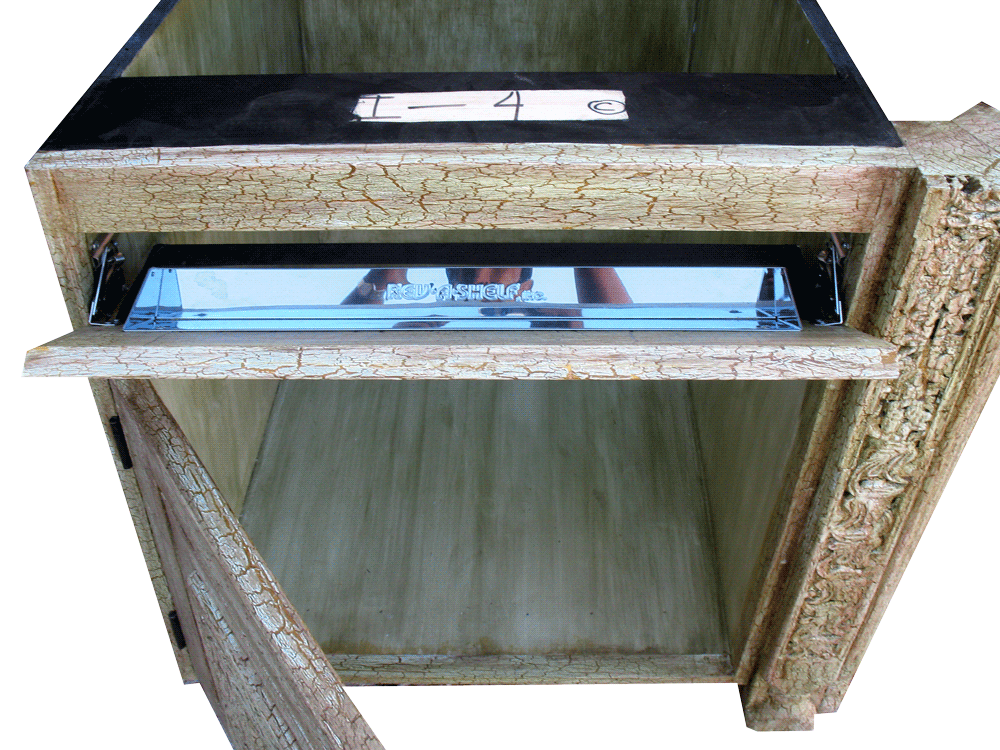







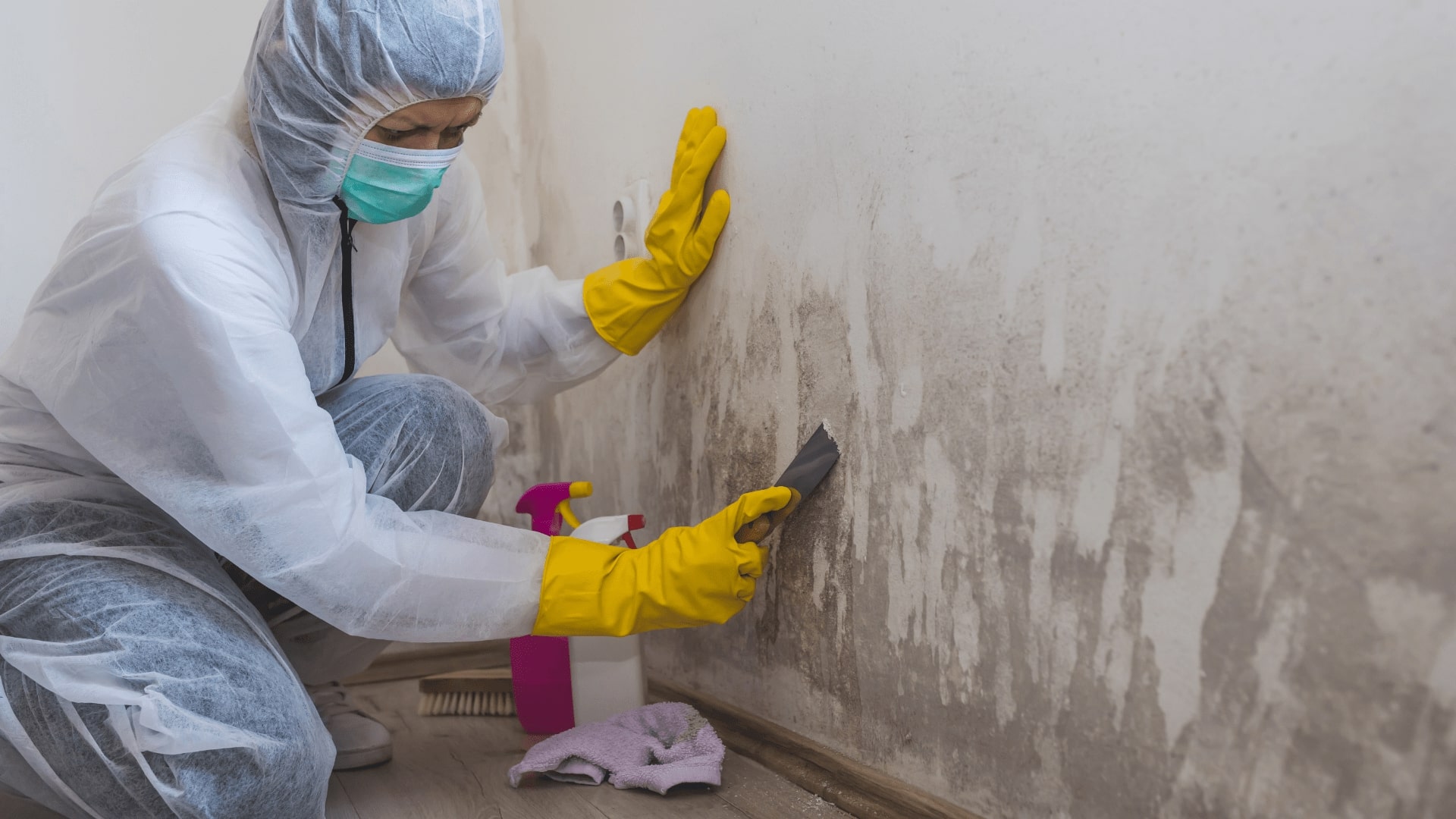


:max_bytes(150000):strip_icc()/water-pipe-under-kitchen-sink-980755976-c96f97e5339142c39e296fe03faba923.jpg)












